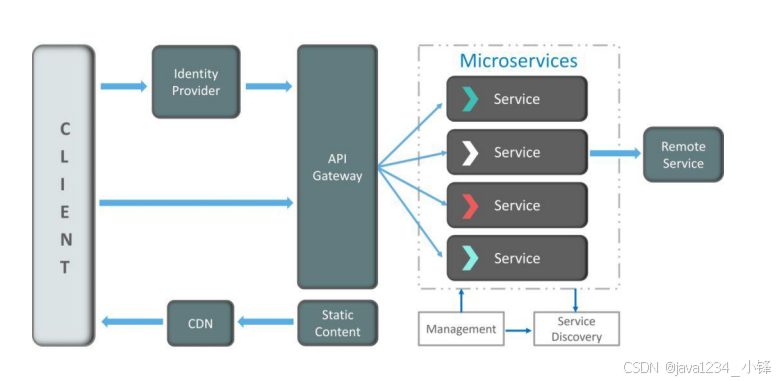使用代码如何开展接口自动化测试。
一 选择自动化测试用例
业务流程优先,单接口靠后,功能稳定优先,变更频繁不选。
二 搭建自动化测试环境
(1)安装python编译器3.7版本以上--自行安装
(2)安装pycharm工作,方便编写和维护代码--自行安装
(3)安装request三方库,用于发送请求
(4)安装pytest三方库,用于编写测试用例
(5)安装allure,用于查看生成和查看测试报告
三 搭建自动化测试框架
(1)搭建基础框架项目目录结构
(2)通用功能类的封装,如数据库连接,excle读取等
(3)接口对象(业务类)封装与调用:接口API+Pytest框架编写测试脚本
(4)测试数据参数化(一般是针对单接口的),测试数据json,yaml,excle等
(5)用例组织运行,运行测试用例并生成测试报告
四 代码实现自动化
五 实现持续集成CICD
自行完成python和pycharm工具的安装后,我们接下来就是安装request,pytest,以及allure。
六 request安裝
request是一個三方的库,他的安装非常简单,如下
安装:python -m pip install requests
验证:pip show requests
request的使用步骤:导入包-->发送接口请求--->查看响应数据
- request发送请求
request.请求方法(url,params=None,data=None,json=None,header=None)
//请求方法一般为:get,post,put,delete- requests查看响应
查看状态码:response.status_code
json形式的响应内容获取:response.json()
文本形式的响应内容获取:response.text
查看请求url:response.url
查看响应头部字符编码:response.encoding
查看头信息:response.headers
查看cookie:response.cookie
简单示例:
# 1 导包
import requests
# 2 发送请求
response = requests.get(url='www.baidu.com')
# 查看响应
print(response.status_code)
print(response.text)七 pytest框架环境搭建
1.使用pip安装pytest
pip install pytest 安装pytest
pip install pytest-html 原生态的报告模板2.查看安装是否成功
pip show pytest3.pytest执行测试用例的规则
- .py测试文件必须以test开头(或以test结尾)
- 测试类必须以Test开头,且无init方法
- 测试方法必须以test开头,def test_001()
- 断言必须使用assert
4. 数据驱动(参数化)
数据驱动:data driver testing(DDT),在自动化测试中测试数据与功能函数相分离,单独存储,运行自动化测试用例时,框架会读取数据源中的数据,把数据作为参数传递到功能函数中。
由于一般测试用例覆盖多条不同输入,根据不同的前置条件选取多条数据执行多次同一功能函数,这样减少重复代码,不同输入条件之间的测试结果互相不受影响,这就是数据驱动。
在方法前添加语法糖即可实现参数化:
# @pytest.mark.parameriza('变量名',[参数化数据]) ---单一参数
@pytest.mark.parameriza('a',[1,2,3])
def test_001(self,a):print('第一个测试用例')assert 1+1==a
# 说明:用例会执行三次(三组数据),a分别为1,2,3# @pytest.mark.parameriza('变量名1,变量名2',[(value1.,value2),(value2,)]) ,多个参数
@pytest.mark.parameriza('a,b',[(1,2),(3,4),(5,6)])
def test_001(self,a,b):print('第一个测试用例')assert a+1==b
# 说明:用例会执行三次(三组数据),a分别为1,3,5,b分别为2,4,65.pytest的 setup 与 teardown
- setup:前置条件,测试用例的前置条件
- teardown: 后置条件,用例执行后,需要恢复测试环境
- yield :在这个关键字之前的代码为setup部分,之后的代码为teardown部分
在pytest中有四种setup和teardown
1、setup_module & teardown_module:在整个测试用例所在的文件中所有的方法运行前和运行后运行,只会运行一次;
2、setup_class和teardown_class:则在整个文件中的一个class中所有用例的前后运行;
3、setup_method和teardown_method:在class内的每个方法运行前后运行;
4、setup_function、teardown_function:在非class下属的每个测试方法的前后运行;
import pytest@pytest.fixture(scope='session') #装饰器,声明下面的函数是setup函数,缺省值为function级#scope可以加入参数scope='class',将级别改为class#scope可以加入参数scope='module',将级别改为module#scope='session' 使用这个级别时,将fixture的内容写到conftest.py文件中,目录下的所有文件都使用这个配置def fun1():print('开始')yield #这个关键字之后的代码相当于teardownprint('结束')def test_c01(fun1):assert 1==2if __name__ == '__main__':pytest.main(['conftest.py','-s'])6、运行文件:
- 运行并生成html测试报告:
pytest 用例路径 --html=./report/result.html, 注意:--html= 没有空格. - 运行该测试模块:
pytest test_login.py -s, -s 输出print信息 - 用main()方法来运行:
pytest.main(['当前用例路径','--html=测试报告/XX.html '])---> 运行并生成html测试报告 - 通过allure生成测试报告:
pytest.main([__file__, '-sv','--alluredir','./report/report','--clean-alluredir'])
八 Allure安装--pytest 结合Allure操作
- Allure 安装
1、下载Allure.zip并解压到任意目录(C:\allure\allure-2.13.0\)
2、添加该路径到环境变量的path中
3、cmd 安装 pip install allure-pytest
4、验证是否安装成功:cmd 中输入allure --version查看盗版本信息
如果安装不成功,可以在环境变量--系统变量--path中配置上allure的bin目录
5、allure报告生成:cmd执行命令生成、pycharm的终端Terminal执行命令
(1)方式1:pytest [测试文件] -s -q --alluredir=../report/tmp生成Allure报告, 数据存在/tmp目录,--alluredir用于指定存储测试结果的路径;-s表示允许执行print语句;
(2)方式2:allure generate ../report/tmp -o ..report/tmp --clean生成测试报告,–clean 覆盖路径
6、查看测试报告
(1)使用默认浏览器打开:allure serve ../report/tmp/
(2)打开报告:allure open -h 127.0.0.1 -p 8883 ./report/
在cmd/终端中:测试用例的执行以及报告的生成如下:
pytest test_feature_story.py --alluredir=./result/2 # 执行测试用例模块test_feature_story.py
allure generate ./result/2 -o ./report/2/ --clean # 生成allure 测试报告
allure open -h 127.0.0.1 -p 8883 ./report/2 # 打开allure 测试报告在自动化测试中,执行以及生成报告如下:在main.py模块中,并运行可自动生成报告
pytest.main(["./test_script", "-sv","--alluredir","./report/temp_jsonreport"])
os.system("allure generate ./report/temp_jsonreport -o ./report/html --clean")# ./test_script 测试用例的路径,可以吧多个测试用例写在这个一个文件中
# --alluredir 创建allure报告的路径
# -o是执行
# --clean是清除之前生成的报告
# 或者
pytest.main([__file__, '-sv','--alluredir','./report/report','--clean-alluredir'])
os.system('allure serve ./report/report') # 注意:因为allure生成的报告是json格式的,需要再转化成html格式的,所以会自动生成一个temp_jsonreport文件
- allure 报告可以展示多级
@allure.epic('1')
@allure.feature(‘2’)
@allure .story('3')
@allure.title(‘4’)
例子:简单生成报告的过程
import pytest
import allure
import os
@allure.epic('项目名称')
@allure.feature('业务模块名称')
class Test100: @allure.story('接口名称') @allure.title('用例标题1') def test_c100(self): assert 1 == 2 @allure.story('接口名称2') @allure.title('用例标题2') def test_c101(self): assert 1 == 1 if __name__ == '__main__': pytest.main([__file__, '-sv','--alluredir','./report/report','--clean-alluredir']) os.system('allure serve ./report/report')





